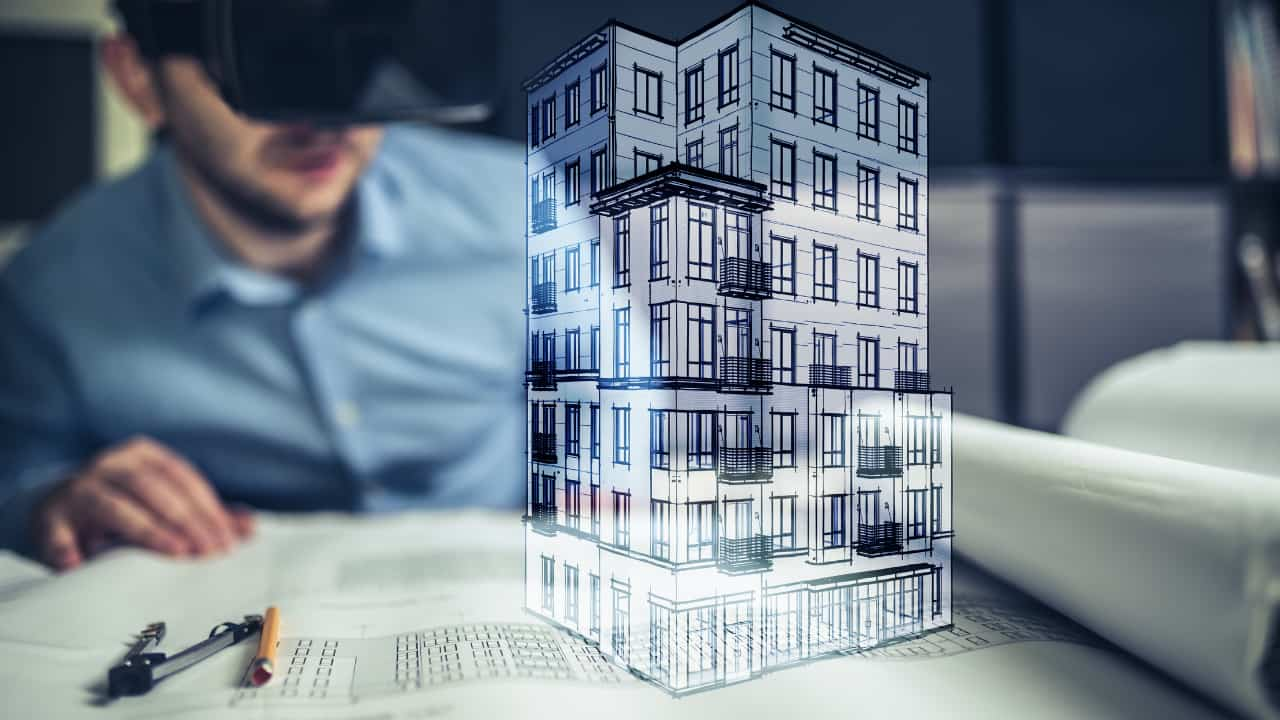In the realm of interior design, visualization is a cornerstone of creativity and communication. Rendering, a powerful digital tool, holds the capability to transform abstract ideas into vivid, realistic representations.
It plays a pivotal role in the design process, enabling designers to showcase their concepts with unparalleled accuracy and helping clients visualize the final outcome before any construction or renovation takes place.
In this comprehensive blog, we’ll delve into the intricacies of rendering in interior design, exploring its techniques, benefits, applications, and impact on the industry.
What is Rendering in Interior Design?

Rendering is a digital technique that simulates the appearance of a space in a lifelike manner, complete with lighting, materials, textures, and details. By leveraging computer software, interior designers can create 2D or 3D visualizations that capture the essence of their design concepts.
These renderings offer a window into the future, allowing clients, stakeholders, and design teams to experience the space before it’s brought to life physically. In this article, we’ll uncover the multifaceted nature of rendering and its transformative impact on interior design.
The Techniques of Rendering
Rendering encompasses a range of techniques that vary in complexity and visual fidelity. Here are some common rendering techniques used in interior design:
1. Hand-Drawn Renderings
Hand-drawn renderings involve the skilful application of traditional art mediums such as markers, coloured pencils, or watercolours. While these renderings possess a distinct artistic charm, they are often less detailed and precise than digital alternatives.
2. Digital 2D Renderings
Digital 2D renderings are created using software like Adobe Photoshop or Illustrator. Designers enhance 2D floor plans with textures, colours, and patterns, offering clients a glimpse into the layout and aesthetics of a space.
3. 3D Modeling and Rendering
3D modelling involves creating a three-dimensional digital representation of a space. Software like SketchUp or Blender allows designers to construct intricate room layouts, architectural elements, and furniture. Once the model is complete, rendering software like V-Ray or Lumion adds photorealistic textures, lighting, and shadows.
4. Virtual Reality (VR) Rendering
VR rendering takes visualizations to an immersive level by enabling clients to explore spaces in virtual reality. Designers create 3D models and environments that clients can navigate using VR headsets, providing an interactive and immersive experience.
Benefits of Rendering in Interior Design

Rendering offers a plethora of benefits that extend beyond aesthetics. Here are some key advantages that underscore its importance in interior design:
1. Precise Design Communication
Rendering bridges the gap between designers and clients by presenting a tangible representation of design concepts. Clients can better understand proposed layouts, materials, colour schemes, and spatial arrangements.
2. Realistic Material Representation
Rendering accurately showcases how different materials will appear in the designed space, from wall finishes to flooring options. Clients can see how textures and materials interact with lighting conditions.
3. Iterative Design Process
Digital rendering facilitates quick design iterations. Designers can experiment with various concepts, layouts, and colour schemes without the time and cost associated with physical changes.
4. Time and Cost Savings
Rendering eliminates the need for physical mock-ups and prototypes, saving time and resources. Clients can visualize the final outcome and make decisions before construction begins, minimizing potential revisions.
5. Enhanced Presentation and Marketing
Renderings are powerful marketing tools. Designers can create captivating visual materials for project presentations, portfolios, and marketing materials that attract potential clients and investors.
6. Exploration of Lighting Effects
Rendering allows designers to simulate different lighting scenarios, including natural light, artificial light, and ambient lighting. This helps in optimizing lighting design for both aesthetics and functionality.
7. Spatial Planning and Furniture Arrangement
Designers can experiment with various furniture layouts and spatial arrangements in rendered environments. This aids in optimizing space usage and creating functional, well-organized interiors.
8. Visualization of Unbuilt Spaces
For projects that are still in the planning phase or under construction, rendering provides a glimpse of how the final space will look. This aids in decision-making and visualizing the end result.
9. Integration of Design Elements
Rendering allows designers to seamlessly integrate architectural features, furniture, decor, and other design elements into a cohesive visual representation. This aids in ensuring design harmony.
10. Client Engagement and Confidence
Well-executed renderings engage clients emotionally and instil confidence in the design. Clients can see their vision taking shape, fostering a deeper connection with the project.
Applications of Rendering in Interior Design

Rendering finds applications across various facets of interior design, including:
1. Residential Design
Rendering brings residential interiors to life, enabling clients to see how their homes will look with different design choices. From living rooms to kitchens, bedrooms, and bathrooms, renderings capture the essence of the envisioned spaces.
2. Commercial Spaces
Rendering transforms commercial spaces such as offices, retail stores, restaurants, and hotels. Businesses can visualize how the interior design aligns with their brand identity and customer experience goals.
3. Hospitality Design
In the hospitality industry, rendering helps create visually enticing hotels, resorts, and lodges. Designers can showcase how different room designs, lobby layouts, and amenities contribute to the guest experience.
4. Healthcare Environments
Healthcare facilities benefit from rendering by visualizing patient rooms, waiting areas, and treatment spaces. This aids in optimizing the layout for patient comfort and operational efficiency.
5. Educational Spaces
Rendering assists in designing educational spaces such as classrooms, libraries, and auditoriums. It allows educators to envision layouts that support effective learning environments.
6. Exhibition and Event Spaces
Rendering transforms exhibition and event spaces, offering organizers and attendees a preview of how the space will accommodate exhibits, stages, seating, and displays.
7. Renovation and Remodeling
For renovation and remodelling projects, rendering visualizes the transformation of existing spaces. Clients can see how design changes will update and refresh their interiors.
The Future of Rendering in Interior Design

As technology continues to advance, the future of rendering in interior design holds exciting possibilities:
1. Real-Time Rendering
Real-time rendering technologies enable designers to see changes instantly as they make adjustments, enhancing workflow efficiency and interactivity.
2. Artificial Intelligence (AI) Integration
AI-driven rendering can automate certain aspects of the rendering process, making it faster and more accurate. AI can predict lighting effects, material behaviour, and other visual parameters.
3. Augmented Reality (AR) Integration
AR-enabled devices will allow clients to view virtual furnishings and designs overlaid onto real-world spaces, enhancing the physical-virtual integration in interior design.
4. Sustainability Visualization
Rendering can simulate the environmental impact of design choices, allowing designers to make more sustainable decisions regarding energy usage, materials, and lighting.
5. Collaborative Design Platforms
Cloud-based rendering platforms will enable real-time collaboration among designers, clients, and stakeholders, fostering seamless communication and design refinement.
Conclusion: Elevating Interior Design through Visualization
Rendering has fundamentally transformed the way interior design concepts are communicated, perceived, and realized. From enhancing communication between designers and clients to optimizing spatial arrangements and reducing design uncertainties, rendering has emerged as an indispensable tool in the interior design toolkit.
With each technological advancement, rendering pushes the boundaries of creativity and innovation, paving the way for a future where the line between imagination and reality becomes increasingly blurred.
As the interior design industry continues to evolve, rendering will undoubtedly play a pivotal role in shaping the aesthetics and functionality of the spaces we inhabit.
Check Our 3D Rendering Studio Services:3D Exterior Rendering Services
3D Interior Rendering Services
3D Floor Plan Rendering Services
3D Architectural Walkthrough Animation
3D Product Rendering Services





